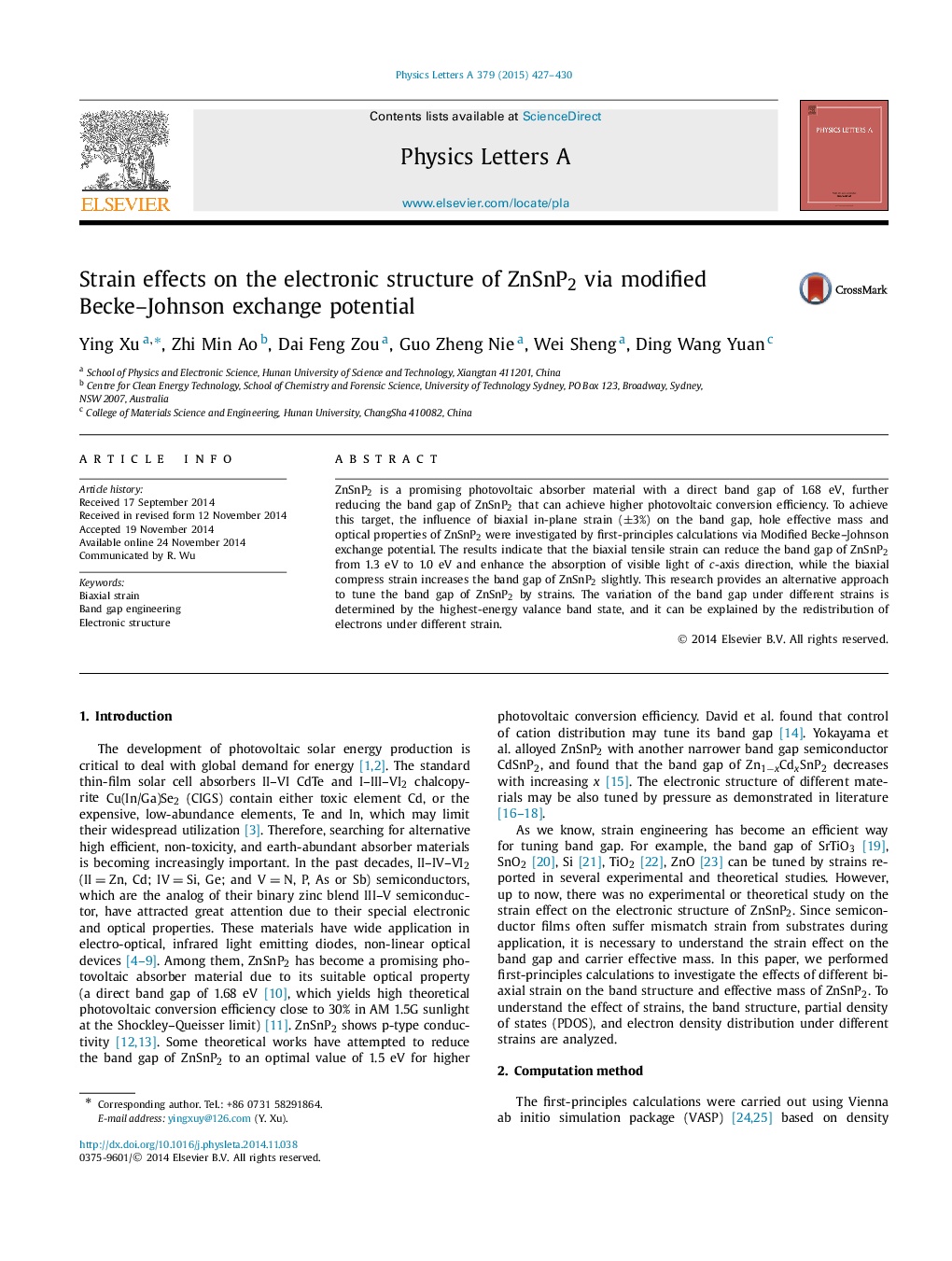| Article ID | Journal | Published Year | Pages | File Type |
|---|---|---|---|---|
| 1859090 | Physics Letters A | 2015 | 4 Pages |
•The influence of biaxial in-plane strain (±3%) on the band gap of ZnSnP2 were investigated by DFT calculations.•MBJ exchange potential can describe the band structure of ZnSnP2 quite well.•Tensile strain brings a substantial decrease of the band gap, while the compress strain has no evident effect.•The calculated visible light adsorption coefficient increases along c-axis direction under tensile strain.
ZnSnP2 is a promising photovoltaic absorber material with a direct band gap of 1.68 eV, further reducing the band gap of ZnSnP2 that can achieve higher photovoltaic conversion efficiency. To achieve this target, the influence of biaxial in-plane strain (±3%) on the band gap, hole effective mass and optical properties of ZnSnP2 were investigated by first-principles calculations via Modified Becke–Johnson exchange potential. The results indicate that the biaxial tensile strain can reduce the band gap of ZnSnP2 from 1.3 eV to 1.0 eV and enhance the absorption of visible light of c-axis direction, while the biaxial compress strain increases the band gap of ZnSnP2 slightly. This research provides an alternative approach to tune the band gap of ZnSnP2 by strains. The variation of the band gap under different strains is determined by the highest-energy valance band state, and it can be explained by the redistribution of electrons under different strain.
